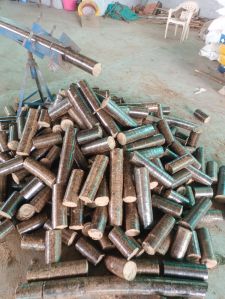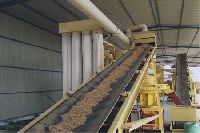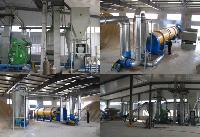
1000 Kg/hr Ring Die Biomass Pellet Auto Plant
2,100,000 Per Piece
1 Piece (MOQ)

biomass pellet plant
9 Per Kg
25 Ton (MOQ)
Best Deals from Biomass Pellet Plant

12mm to 16 mm biomass pellet
8 - 10 Per kgs
30000 KGS (MOQ)
70148 90569

biomass pellet plant
Get Price Quote
The complete plant produces 1000kg - 1200 kg per hour of finished pellets. The whole setup includes Hammer Mill, Dryer,Conveyor, Ring Die Type Pelleting, Elevating Conveyer, Cooling Seperator, Pulsed Collector, Packing Machines and Electrical Control Panel System. It can produce upto 1800 kg of animal feed pellets.

biomass pellet plant
Get Price Quote
1 Piece (MOQ)

biomass pellet plant
8 - 10 Per Piece

biomass pellet plant
Get Price Quote
biomass pellet plant, Coal Washery, Oxygen Plant, Coal gasification plant

biomass pellet plant
Get Price Quote
biomass pellet plant

biomass pellet plant
Get Price Quote
biomass pellet plant, Biomass Pellets

biomass pellet plant
Get Price Quote
biomass pellet plant, soda water plant, Coal Handling Plant

biomass pellet plant
Get Price Quote

biomass pellet plant
Get Price Quote
biomass pellet plant, bio cook stoves, bio mass pellets plant

biomass pellet plant
Get Price Quote
biomass pellet plant, Biomass Pellets

biomass pellet plant
Get Price Quote
biomass pellet plant, steel plant equipment, Soybean Meal, Soya Lecithin

biomass pellet plant
Get Price Quote
biomass pellet plant, Pvc Pipe Plant, Wire Enamelling Plant

Bio Mass Pellet Plant
Get Price Quote
we are offering Bio Mass Pellet Plant. Mash Feed Basic Process Animal feed consists of different ingredients to make a balanced diet in terms of proteins, carbohydrates, fats, vitamins, minerals and medicines etc. In manufacturing of feed in mash form, there are few ingredients like DRB, Rice Polish etc which are already available in powder form, while some of these like Grains, Fish, GNE, Soya etc. are available in solid form and has to be converted to granular form to particle size suitable for the animal. For this purpose grinding of these ingredients is carried out with the help of Grinder or Hammer Mill. After converting all the ingredients in the powder form, these have to mix in right proportions to get the homogenous feed. Mixers are employed for this purpose. So there are two basic operations of grinding and mixing in feed manufacturing of feed in mash form. The intake hopper of the grinder and top of mixer are usually at some height between 5 to 8 ft (Depending upon the size of machine) from floor level and material have to be lifted at this level manually. For auto lifting of feed from floor level to the top of machine Screw Conveyors are employed. For vertical lifting of material more than 8-9 ft. from floor level Bucket elevators are best suited Basic Pellet Feed Process PRE - CLEANING The first step in pelleting is conveying of ingredients from bulk silos or godown to the batching bins. It is essential to remove oversize foreign materials and iron trash etc. which otherwise can affect functioning of slide gates, gravity screw feeder in batching or down stream. Pre-cleaning machines generally include rotary sieve, jute remover, magnetic catchers etc. In automatic plants, it is desired that system is designed to give continuous efficient cleaning at maximum flow of ingredients. BATCHING In modern plants, automatic weighing of different materials as per formulation to make one batch is called batching or proportioning. In this any no. of silos of suitable capacity as per total capacity of plant, are incorporated and are having gravity or screw feeders for controlled discharging of material into weigh bin under neath it. Generally two set of bin or silos are installed - one for major ingredients, second for minor ingredients. The discharge of both weighing bin come into common surge for further processing. Bin vibrator or shaking devices are installed on some or all of bins to make the material flow incase of jamming of bin. The weighing is done through an electronic controller working on PLC or micro processor based, which can be operated through a computer. The computer control and record all the detail of a batch- over or under weighing of ingredients from set point, reporting on each batch, shift, day ,weak, month basis. The generally desired features of a batching system are: It should give accurate weighing within specified time to meet output of plant. Though it should be highly reliable and work automatically, it should have manual control also in case of auto failure. GRINDING After batching, next step is to reduce the material to the required degree of fineness to have maximum surface area for exposure to heat and moisture to accomplish gelatinization in conditioners. In pelleting process grinding and pelleting are two major energy consuming operations. If we can perform fine grinding with minimum of energy, it will not only cut grinding cost but also save on energy required in pelleting. MIXING Efficient mixing of micro ingredients in whole batch is significant in making quality feed. The designed features of a good mixing system are: It should perform mixing to achieve minimum coefficient of variation in minimum time. Mixer discharging mechanism should aim at no leakage of gates with minimum residue in drum to avoid carryover to next batch. CONDITIONING Conditioning is done to add heat and moisture in mixed feed to achieve gelatinization and making the product more pliable for pelleting. An ideal conditioning system should meet the following: It should raise the temperature and moisture of product by direct or indirect heating. It should give desired retention time in conditioners. PELLETING After conditioning the product is passed through a die in pellet mill with the help of rollers and powdery material is converted into pellets. The quality and output of pellet mill. is dependent on so many parameters, like: Quality of grinding, conditioning. Formulation of feed: - (percentage of oil, protein, fiber etc.) Die configuration: - Deciding working on product in pelleting. COOLING Hot pellets coming out of pellet mill are required to be cooled immediately to remove moisture and heat. Generally counter flow cooler are used for the purpose. The desired feature of an efficient cooler are: It should be capable to remove the unwanted heat and moisture from pellets to improve its shelf life. The cooling should be uniform from all the sides. CRUMBLING Crumbling is a process in which pellet after cooling is broken into small pieces to make it suitable for small chicks. If not required it can be bye-passed and product escapes from side of crumbling rolls. A well designed crumbler should have following features: Should give uniform size of crumbs at the both ends of crumbling rolls. Should break the material without making much fines. Should have mechanism for equal gap adjustment on both sides. SCREENING Product coming out of crumbler is either in pellets (if crumbler bye passed) or crumbs form. These are required to be screened to remove fines and overs. Single deck screeners are used to remove fines only while double deck screeners are used to remove both fine and overs.. The unbroken or the overs are returned to crumbler and fines return to pelleting line for repelleting. A screener should have following features: It should remove the desired percentage of fines from product. Screens should not clog frequently. Changing of screens of desired mesh should be easy and quickly.

biomass pellet plant
Get Price Quote
biomass pellet plant, biomass briquetting plant

biomass pellet plant
Get Price Quote
biomass pellet plant, fancy ladies kurti, Biomass Pellets

biomass pellet plant
Get Price Quote
biomass pellet plant, biomass pellet plant

biomass pellet plant
Get Price Quote
biomass pellet plant, cnsl oil, biogas stove, LWP Cashew, Cashew W240